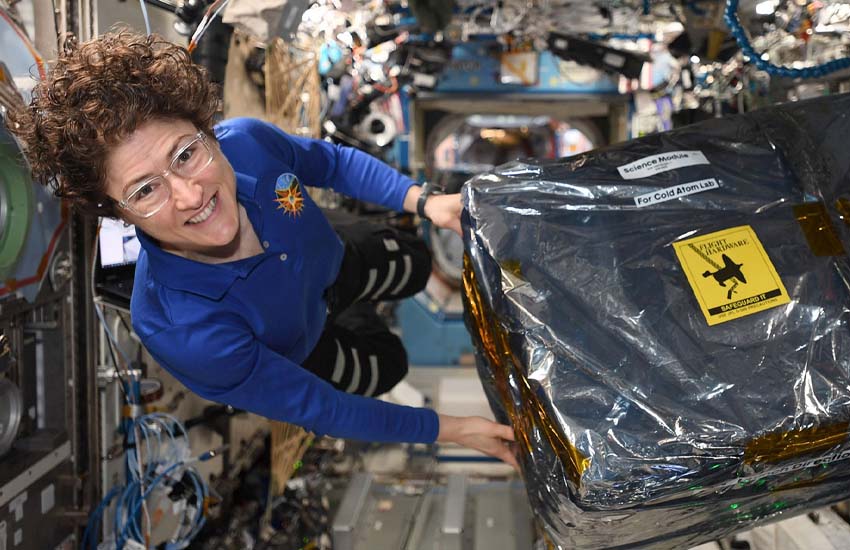The Cold Atom Lab has been up and running in the Space Station's science module since July 2018 and is operated remotely from NASA's Jet Propulsion Laboratory in Pasadena, California.
Five groups of scientists on Earth are using the Cold Atom Lab to conduct a variety of experiments to help answer questions about how our world works at the smallest scales.
The new hardware includes an instrument called an atom interferometer that will allow scientists to make subtle measurements of gravity and probe fundamental theories of gravity.
Further development of this technology in space could lead to improved inertial-force sensors, which could be used to design tools for enhanced spacecraft navigation, to probe the composition and topology of planets and other celestial bodies, and to study Earth's climate.
Chilling atoms to such low temperatures slows them down significantly, enabling scientists to study them more easily (room temperature atoms move faster than the speed of sound, while ultra-cold atoms move slower than a garden snail.)
Ultra-cold atom physics has led to breakthroughs such as the discovery of superfluidity and superconductivity, as well as the production of a fifth state of matter, called a Bose-Einstein condensate (BEC).
First predicted in the 1920s, BECs allow scientists to observe quantum behaviours of atoms on a macroscopic scale.
Physicists have been using ultra-cold atom facilities in Earth-bound labs for more than 20 years. But CAL is the first such facility in Earth orbit, where the micro-gravity environment provides scientists longer observing times for individual bunches of atoms and may allow for colder temperatures than what can be achieved on the ground.
About the size of a mini refrigerator, the Cold Atom Lab will be equipped with the newly arrived hardware in 2020.
Designed and built at NASA's Jet Propulsion Laboratory in Pasadena, California, the Cold Atom Lab is sponsored by the International Space Station Program at NASA's Johnson Space Center in Houston, and the Space Life and Physical Sciences Research and Applications (SLPSRA) Division of NASA's Human Exploration and Operations Mission Directorate at NASA Headquarters in Washington.

